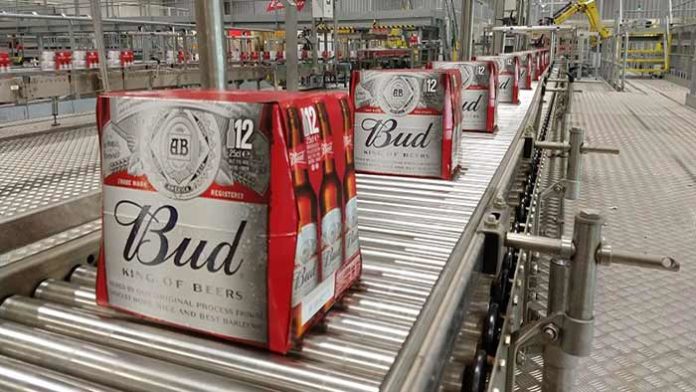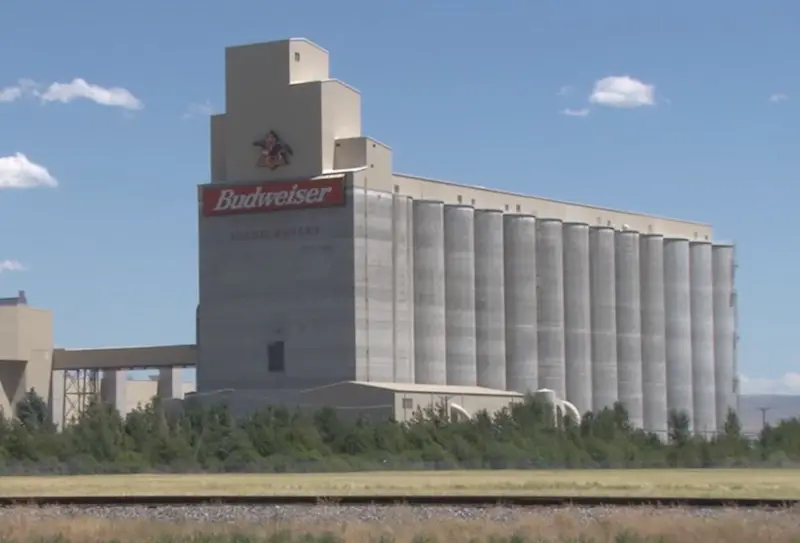Budweiser is brewed in St. Louis. It originated with the headquarters there and has always been situated in that location. That fact led Americans to claim the beer as their own. Technically, while the beer is created here, the owner of the business initially was a German immigrant, Mr. Adolphus Busch.
He came to America in 1857, eventually creating a brewery alongside Abert Anheuser specifically to cater to the German community in St. Louis. As an immigrant finding his wealth in the country, it inspires the “American dream” scenario giving the beer all that more of an Americana spin.
However, in 2008 Anheuser-Busch was sold to the Belgian business In-Bev, meaning any business decisions are made outside of America. The new parent company, Anheuser-Busch InBev, makes these.
However, the headquarters in North America remain in St. Louis. Let’s learn a few interesting facts about how this beer came into being and a few tidbits you might not know.
Table of Contents
ToggleWhat Are They Not Telling Us About Budweiser?

Many Americans aren’t aware or choose not to acknowledge that while Budweiser was headquartered in St. Louis, the beer was not American-made. The owners and the recipe was German and explicitly concocted to cater to a German audience. It wasn’t targeted initially at an American consumer.
History will tell you it became favored and claimed by America dramatically so. Despite how you might feel about beer in the present day, it is a quintessential part of American culture. Whether you consider the Clydesdales at Christmas, group it with all things Americana, apple pie, Bud Light, think about the abandoned pups, and on. There’s something about Budweiser everyone can relate to.
Let’s look at how Anheuser and Busch developed the beer, it wasn’t a hit at first, and a few other tidbits not many Americans are aware of.
The original recipe was nasty
The owners’ original recipe for Budweiser was so bad patrons at bars would literally turn it away. Busch and Anheuser each had backgrounds in the beer industry, with Busch originally coming to the country and developing a brewing supply company and Anheuser owning a brewery. Expertise, however, would go to Busch.
Anheuser’s ownership of a brewery was somewhat of a fluke. He was a successful soap manufacturer who came into the failing brewing company by chance. Because these two came together, Busch applied his German experience along with a new recipe, while Anheuser brought his failing brewery to create Anheuser-Busch.
The secret ingredient that allows all Budweiser beer to taste similar to this day
When a drink or a food product succeeds, it’s typically because the recipe is consistent. People can rely on it to always be the same. If it changes in any way, that’s a reason that many will change to something else. Regardless of how it’s packaged, Budweiser is consistent with the same taste all these years. That’s how it should be.
How does a brand maintain this sort of consistency among 12 breweries throughout the country? The recipe calls for the same yeast. This yeast is of the same culture that Busch initially used in his first batch of Budweiser brewed in the mid-1800s.
According to its website, the yeast is shipped from St. Louis to each brewer for consistent production. All the yeast cells in each product come from the original culture.
The beer consists of only five ingredients
While you could say the age-old yeast would be the reason for the flavor, it’s not alone. The whole of the recipe is what works for the beer.
The brew consists of only five ingredients, including the typical hops, barley malt, yeast, water, and, surprisingly, rice. It’s an unusual addition but boasts of “a smooth, crisp taste,” However, the speculation is that the ingredient actually helps dilute the brew as a less costly choice to malted barley.
Before pasteurizing was a thing, Busch and Anheuser were using the process
Before pasteurizing was a thing with milk, Busch was the first beer brewer to use the process, which was vastly unfamiliar at the time to ship the products to avoid the potential for spoilage in the late 1800s.
The brew company owner was exceptionally innovative. He changed the shipping process for beer by late in the 19th century. He wanted the freshest taste for the beer he could achieve when consumers received it, regardless of the length of the journey. He developed “artificial refrigeration, rail-side ice houses, and refrigerated rail cars.”
Because of Busch’s advances in shipping, he became a nationwide distributor instead of being restricted to only St. Louis.
Prohibition was challenging for alcohol production
The 1930s brought with it prohibition in America and difficulty for alcohol-based businesses. Anheuser-Busch tried a few ploys to remain profitable through the challenge but could survive by selling the individual raw ingredients since making the “recipe” was now illegal.
Busch’s son was the mastermind behind the idea. There was no law against selling the products that created the beer; it was merely illegal to produce the brew. The yeast was primarily the profitable component that kept them going until they could resume production. When the laws were lifted, most of the competitors were wiped out.
Conclusion
The Clydesdales, the epitome of the Budweiser advertising campaign so many people find stunning, don’t easily get a position on the big screen. The suggestion is that these beautiful horses must be “interviewed” for their roles. This marketing scheme had existed since the early 1930s when Busch’s sons surprised him with a “Clydesdale hitch of six horses.”
Busch was moved to tears; thus, the adage “crying in your beer” and the horses became a primary component of the business.
Nowadays, the company breeds Clydesdale, but to be among the herd, the horses must be consistent in their aesthetics. These animals must be geldings, no less than four years old, standing “18 hands high,” at least.
Each should have a black tail and mane, a “blaze of white” across the face and four white stockings, and a bay coat, with a weight ranging “between 1800 to 2300 pounds.” This is according to the Missouri Warm Spring Ranch that homes the Clydesdales for Budweiser.
Despite mistakes or poor choices, some things won’t change with Budweiser that Americans can be sure. You can count on the taste, the Clydesdales will show up every year, and regardless of who owns it, Americans can claim it as the most American beer since the 1800s.

I am a passionate beer connoisseur with a deep appreciation for the art and science of brewing. With years of experience tasting and evaluating various beers, I love to share my opinions and insights with others and I am always eager to engage in lively discussions about my favorite beverage.
















